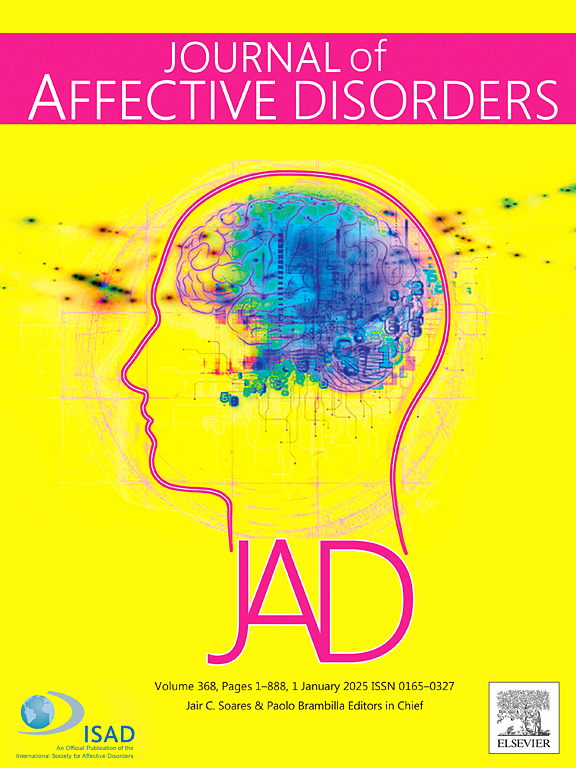Efficacy evaluation and facial expressions biomarker of light therapy in youths with subthreshold depression: A randomized control trial study
IF 4.9
2区 医学
Q1 CLINICAL NEUROLOGY
引用次数: 0
Abstract
Background
Simpler and more feasible light therapy protocols, and objective indicators for assessing its effectiveness is lacking. We aimed to evaluate the efficacy of light therapy on subthreshold depression (SD) among college students and explore facial expressions as an objective biomarker across different treatment groups.
Methods
From September 13, 2021, to January 4, 2022, college students with SD were recruited from a university in Hubei Province, randomly assigned to Bright Light Therapy (BLT) group (10,000 lx), Dim Light Therapy (DLT) group (200 lx), or Waiting List Control (WLC) group (no intervention). Self-reported questionnaire and facial expressions were assessed for all participants before and after intervention. Repeated measures ANOVA and logistic regression were conducted to compare baseline and post-intervention differences among three groups.
Results
135 participants were enrolled and 121 participants completed the study. Depression symptom and sleep quality scores significantly decreased in both BLT and DLT groups (P < 0.001), while no significant changes were observed in WLC group. BLT (OR, 4.50; 95 % CI, 1.11–18.27; P = 0.035) and DLT group (OR, 4.17; 95 % CI, 1.04–16.79; P = 0.045) had higher efficacy rates than WLC group. For facial expressions, DLT group showed significant increases in two happy-related facial action units (AU) including AU14 values (positive, negative and neutral stimuli) and AU26 values (neutral and negative stimuli). BLT group showed a significant decrease in fear-related AU20 values under negative stimuli (P < 0.001).
Conclusion
Light therapy improves depressive symptoms and sleep quality in individuals with SD, and facial expressions can serve as an objective biomarker to support its effectiveness.
背景:目前还缺乏更简单、更可行的光疗方案以及评估其效果的客观指标。我们旨在评估光疗对大学生阈下抑郁(SD)的疗效,并探讨不同治疗组的面部表情作为客观生物标志物的作用:方法:2021年9月13日至2022年1月4日,我们从湖北省某大学招募了患有亚阈值抑郁症的大学生,将他们随机分配到亮光治疗组(10,000 lx)、暗光治疗组(200 lx)或等待名单对照组(无干预)。在干预前后,对所有参与者的自我报告问卷和面部表情进行了评估。研究人员采用重复测量方差分析和逻辑回归法比较了三个组的基线和干预后的差异:结果:135 人参加了研究,121 人完成了研究。BLT组和DLT组的抑郁症状和睡眠质量评分均明显下降(P 结论:光疗改善了抑郁症状和睡眠质量:光疗可改善 SD 患者的抑郁症状和睡眠质量,面部表情可作为支持其有效性的客观生物标志物。
本文章由计算机程序翻译,如有差异,请以英文原文为准。
求助全文
约1分钟内获得全文
求助全文
来源期刊

Journal of affective disorders
医学-精神病学
CiteScore
10.90
自引率
6.10%
发文量
1319
审稿时长
9.3 weeks
期刊介绍:
The Journal of Affective Disorders publishes papers concerned with affective disorders in the widest sense: depression, mania, mood spectrum, emotions and personality, anxiety and stress. It is interdisciplinary and aims to bring together different approaches for a diverse readership. Top quality papers will be accepted dealing with any aspect of affective disorders, including neuroimaging, cognitive neurosciences, genetics, molecular biology, experimental and clinical neurosciences, pharmacology, neuroimmunoendocrinology, intervention and treatment trials.
 求助内容:
求助内容: 应助结果提醒方式:
应助结果提醒方式:


